As beef prices continue to rise and supply chain issues plague the industry, seafood has been making a splash on menus across the world. However, with increased reliance on seafood comes more risk to the oceans. As demand for seafood grows, it’s also ushering in a new wave of consumer interest in the sustainability practices that bring fish to the table. There are a lot of terms used to imply that seafood is sustainably fished and harvested, but what do they really mean?
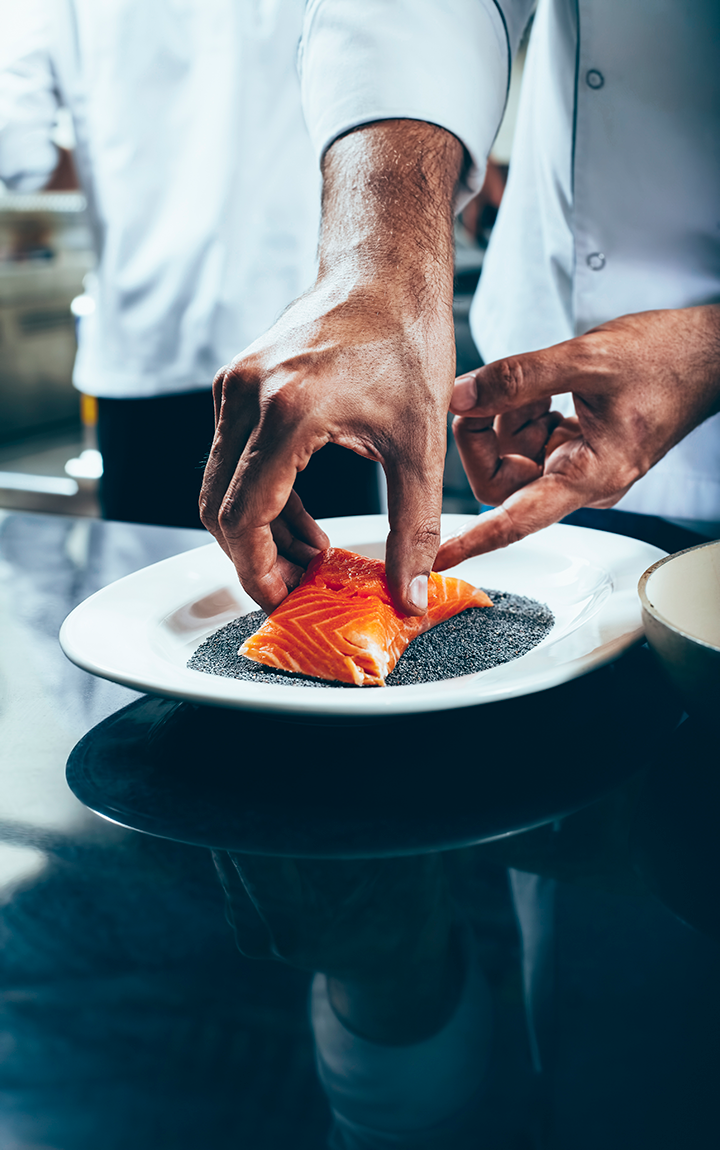
Aside from being delicious, seafood is also great for your health. Photo courtesy Oshen Salmon and BlueGlacier
What is sustainable seafood?
Just as flexitarian or plant-based menus aim to support sustainability on land, sustainable seafood practices (fishing and farming) can contribute to overall ocean health.
Generally, the definition of “sustainable seafood” is “seafood that is either caught or farmed in ways that follow best practices to protect the environment and natural ocean habitats,” according to an interview in FSR magazine with Chef Thomas Card (formerly with North Carolina’s Counting House).
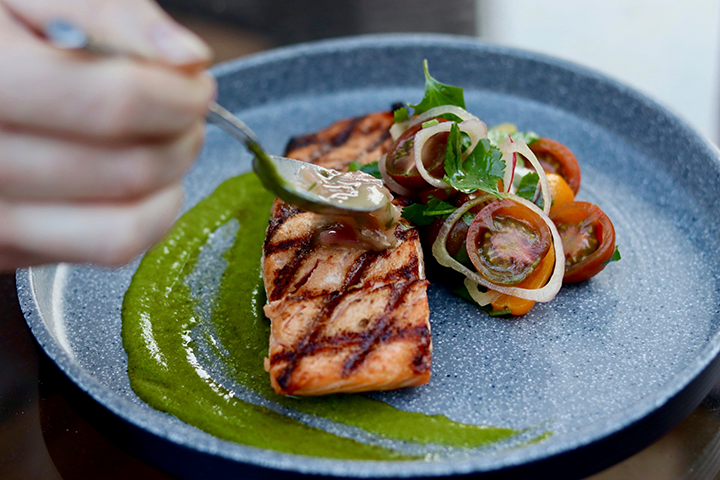
Tequila Lime Grilled Salmon with Heirloom Tomato-Shallot Salad / Coriander-Lime Emulsion / Tequila-Tomato Beurre Blanc. Photo courtesy Proof of the Pudding
The main cause of seafood strife, according to the article, is overfishing, which means that a species of fish is being removed from a body of water at a rate so great that the species cannot replenish.
The growing demand for seafood worldwide has led to buyers and consumers seeking assurances that seafood conforms to higher standards of quality, safety, traceability, and sustainability–especially since sustainability and ocean stewardship is the key to a healthy ocean for fishermen, fishing communities, and consumers.
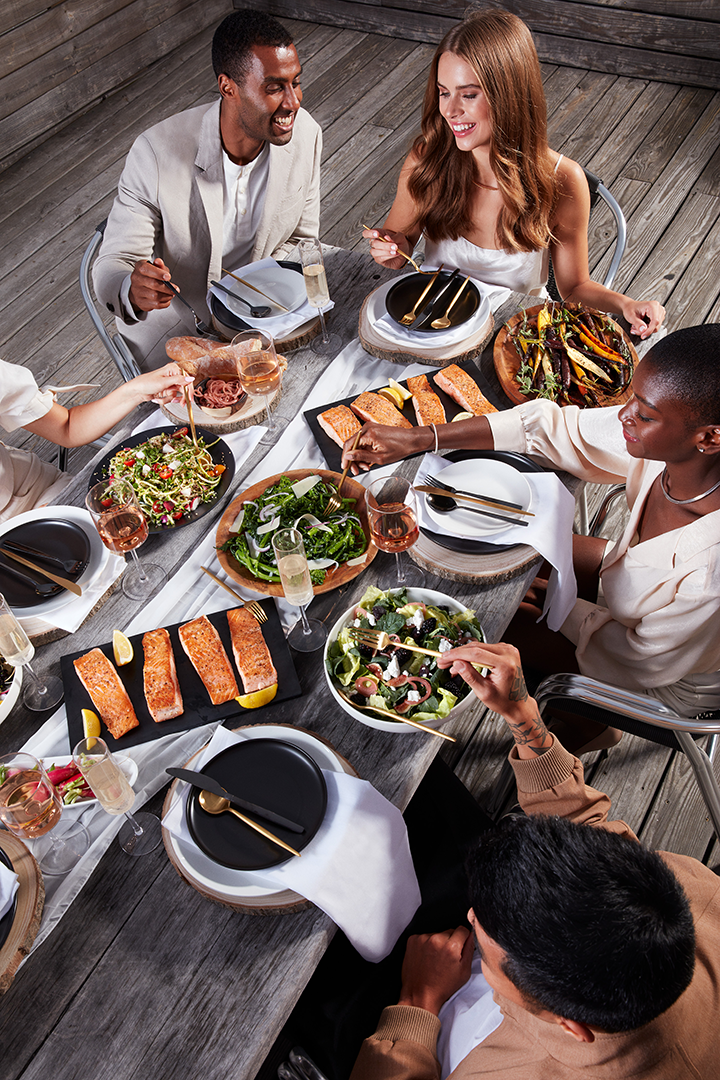
Seafood contains nutrients that are linked to a multitude of benefits, including a reduced risk of coronary heart disease. Shellfish and fish (particularly salmon, tuna, and trout) are also a source of omega-3 fatty acids, which promote heart and brain health. Photo courtesy Oshen Salmon and BlueGlacier
“Much like other forms of sustainability, sustainable seafood has grown in the minds of chefs because of the amount of information that is available to us,” says Chef Nick Klug, Vice President of Culinary, Sports & Entertainment for Proof of the Pudding out of Atlanta. “It is important to use products that are sustainably sourced so that future generations can enjoy these food items as well. The more we abuse the environment, overfish the oceans, and treat our farmland with toxic chemicals, the worse the problem is going to become.”
Fortunately, there are a lot of different ways to bring sustainable seafood to your menus just swimmingly.
From boat to plate
The key to sustainable seafood is that it is either line caught or diver caught, rather than caught in nets, which causes damage to other wildlife around the desired catch.
For example, Scottish salmon farmers have developed the Scottish Salmon Sustainability Charter, which sets out pledges and commitments to work toward a more sustainable, traceable product with a more positive impact on the environment and
local communities. Those five pledges are:
- We will apply the highest standards of animal welfare
- We will work continuously to minimise our impact and ensure a healthy environment
- We will produce healthy, nutritious food with full traceability every step of the way
- We will become the sector of choice for people looking to make a positive difference
- We will be good neighbors in every way, increasing our positive social impact
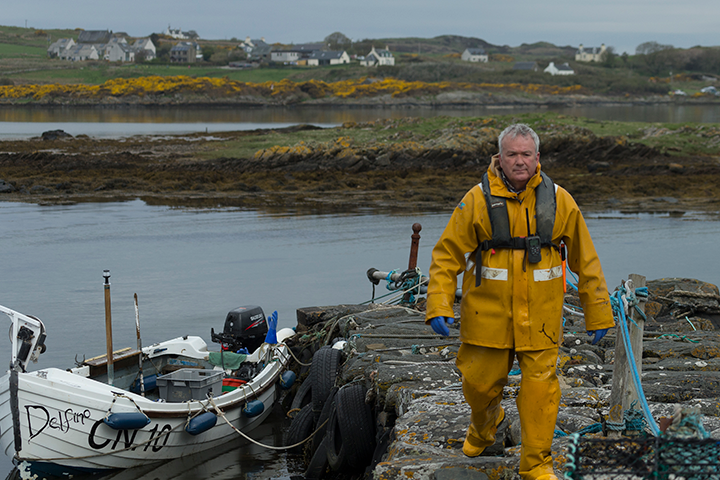
Over 12,000 jobs are created around fishing and aquaculture in Scotland. Scotland’s fishermen, farmers, and producers innovate and adapt to modern day market demands, while staying true to deep rooted traditions which have been handed down through the generations. Photo courtesy Seafood from Scotland
Another sustainable seafood practice is ocean farming (such as aquaculture) where the waste that fish and shellfish are subjected to is reduced, and they are fed clean diets. A bonus to aquaculture is that shellfish farming has emerged as a promising, low-cost tool to help improve water quality.
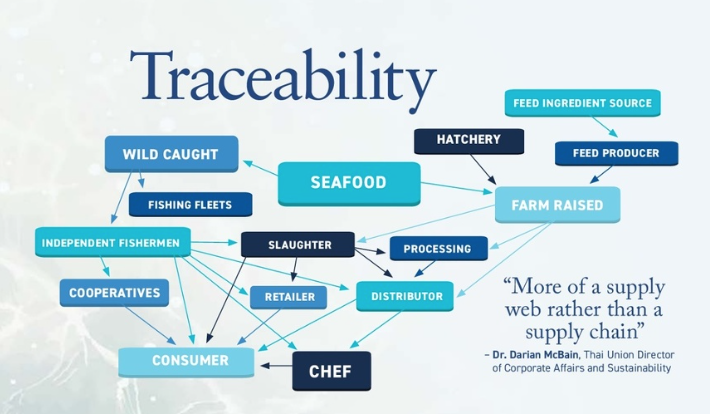
Traceability is one of the biggest challenges related to sustainable seafood. Information courtesy the James Beard Foundation and Smart Catch
“It’s one thing for a chef to say ‘Yes, I want to be sustainable,’ but it’s another for them to actually get that information,” said Corey Peat with Postelsia, which oversees the James Beard Foundation’s (JBF) sustainable seafood rating program Smart Catch, during a recent webinar for the JBF. “Traceability is how we know something is sustainable because not all suppliers are equal.”
Which is why sourcing and finding the right seafood supplier is the first step in bringing sustainable seafood into the kitchen.

All Scottish fishermen comply with strict regulations to deliver a sustainable and traceable supply of seafood from net to plate. Photo courtesy Seafood from Scotland
Sustainably sourcing
Sourcing is the starting point for chefs and fortunately, there is an abundance of resources available for chefs to educate themselves on proper seafood sourcing. In addition to Smart Catch, chefs can also reference tools such as Monterey Bay Aquarium’s Seafood Watch, which is a quick and easy way to find what types of marine life are a preferred choice and which should be avoided based on the program’s assessments that identify the environmental performance of fisheries or aquaculture operations.
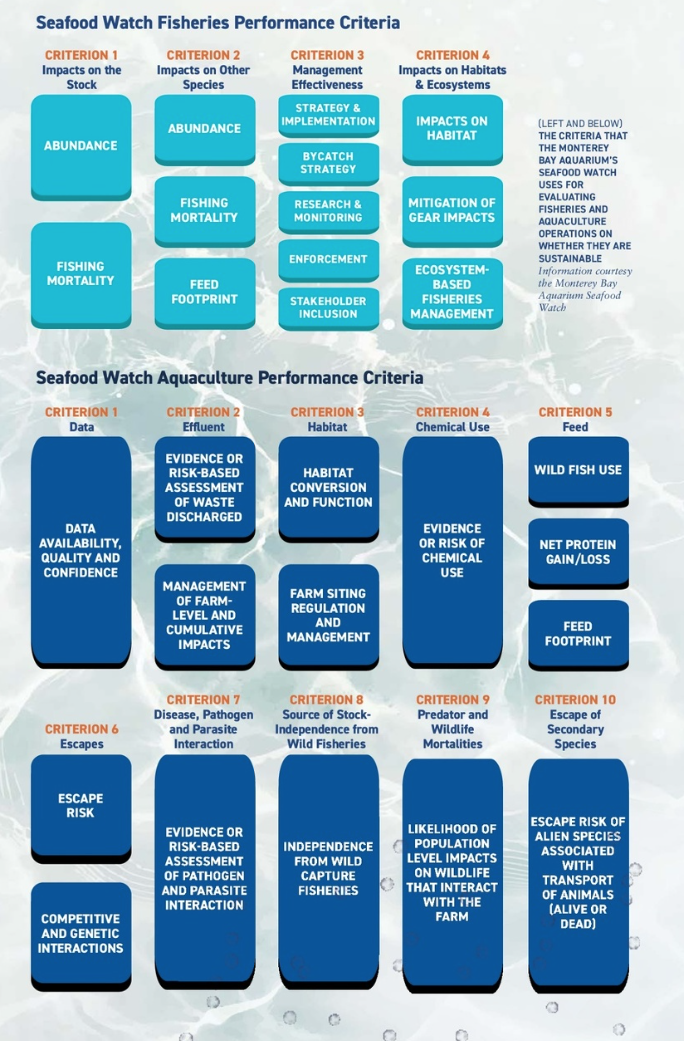
The criteria that the Monterey Bay Aquarium’s Seafood Watch uses for evaluating Fisheries and aquaculture operations on whether they are sustainable. Information courtesy the Monterey Bay Aquarium Seafood Watch
Being aware of sustainability accreditations for suppliers is also another way to be cognizant of where you are sourcing your seafood from. Examples of certifications and accreditations include the Marine Stewardship Council (MSC), the Aquaculture Stewardship Council (ASC), and Best Aquaculture Practices (BAP).
“By first understanding how your decisions as a chef affects these outcomes, chefs can begin to harness this knowledge in designing their own menus,” said Christopher Golden (Assistant Professor of Nutrition and Planetary Health at Harvard T.H. Chan School of Public Health and member of the Blue Food Assessment Scientific Leadership Team) during the Culinary Institute of America’s Menus of Change 2021 seminar Blue Food: Oceans & Fisheries, Product Innovation, and the Professional Kitchen. “It’s win-win for both environment and for nutrition.”
Part 2 of our sustainable seafood series will publish in the fall issue of Catersource, where we will look at menu development and recipe inspiration.
Check back here tomorrow for some tasty seafood recipes.



